Health 4.1
Health information. The student recognizes ways to enhance and maintain health throughout the life span. The student is expected to:
- (1) Personal/interpersonal skills. The student explains healthy ways to communicate consideration and respect for self, family, friends, and others. The student is expected to:
- (2) demonstrate consideration when communicating
with individuals who communicate in unique ways such as someone having a speech
defect, someone not speaking English, or someone being deaf;
- (A) describe healthy ways of responding to disrespectful behavior; and
- (B) describe strategies for self-control and the importance of dealing with emotions appropriately and how they affect thoughts and behaviors.
- (C) Personal/interpersonal skills. The student demonstrates critical-thinking, decision-making, goal-setting, and problem-solving skills for making health-promoting decisions. The student is expected to:
- (3) explain the importance of seeking guidance
from parents and other trusted adults in making healthy decisions and solving
problems;
- (A) explain the advantages of setting short and long-term goals;
- (B) describe the importance of parental guidance and other trusted adults in goal setting;
- (C) explain the dangers of yielding to peer pressures by assessing risks/consequences; and
- (D) describe steps in decision making and problem solving.
- (E) Bullying prevention. The student uses social skills for building and maintaining respectful relationships throughout the life span. The student is expected to:
- (4) describe the characteristics of a bully;
- (A) demonstrate appropriate ways to deal with disrespectful behavior;
- (B) explain the difference between assertive behavior and aggressive behavior;
- (C) describe the negative impact bullying has on both the victim and the bully; and
- (D) demonstrate consideration when interacting with individuals who communicate in unique ways such as someone who has a speech impediment, someone who does not speak English, or someone who has an exceptionally high vocabulary.
- (E) identify the benefits of six major nutrients contained in foods;
- (F) identify information on menus and food labels;
- (G) differentiate between aerobic and anaerobic exercise;
- (H) explain the physical, mental, and social benefits of fitness;
- (I) explain how sleep affects academic performance; and
- (J) identify the importance of taking personal responsibility for developing and maintaining a personal health plan such as fitness, nutrition, stress management, and personal safety.
- Plus Plan

5 Minute Mindfulness Meditation Activity Task Cards for Kids
Bring 5-minute mindfulness meditation into the classroom and your social and emotional learning with these 17 printable activity cards for kids.
- Plus Plan
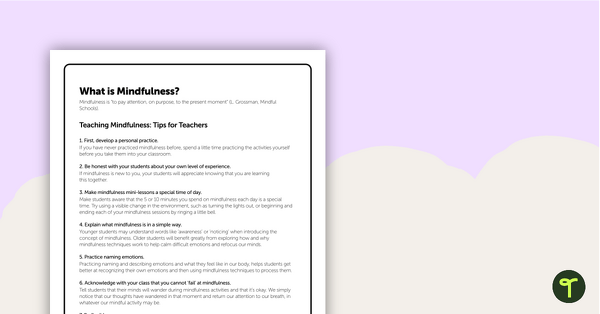
Mindfulness Teacher Information Sheet
New to teaching mindfulness? Read our information sheet with tips on how best to incorporate it into your classroom.
- Plus Plan
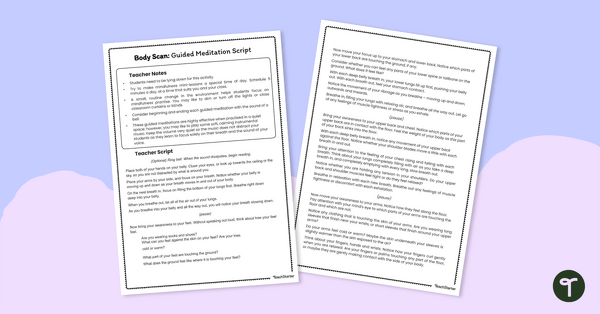
Breathing Colors – Guided Meditation Script for Kids
Print a guided meditation script for teachers to lead your students through a breathing colors meditation exercise.
- Plus Plan

Responding to Stress: Small Group Skit Project
This small-group project lets students apply what they've learned about combatting stress by demonstrating practical coping skills.
- Plus Plan
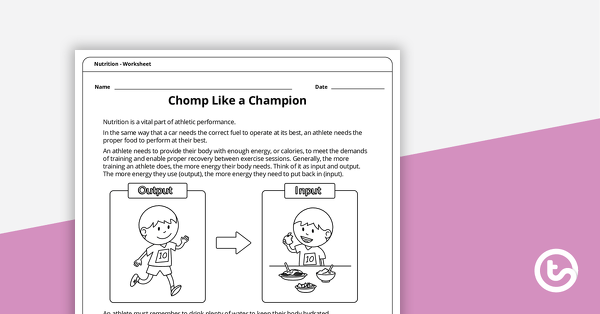
Chomp Like a Champion - Worksheet
Students research dietary guidelines and create a 3-course menu that adheres to the guidelines.
- Plus Plan
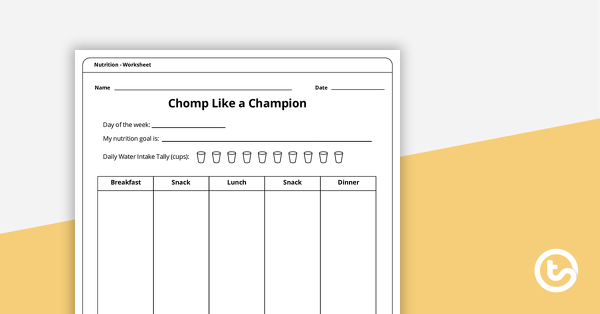
Chomp Like a Champion - Food Journal
A worksheet addressing the importance of balanced nutrition and regular physical activity.
- Plus Plan
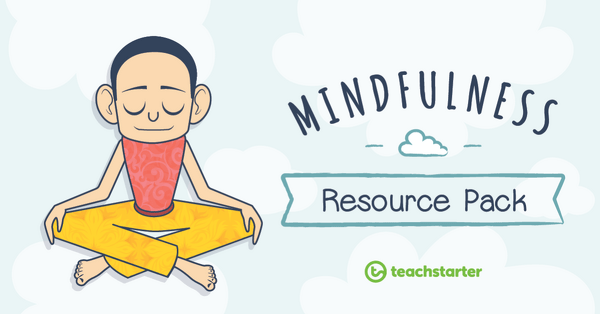
Mindfulness Teaching Resource Pack
A collection of mindfulness teaching resources, including activity task cards, meditation scripts, coloring sheets, and more.